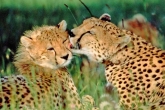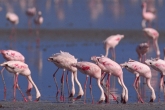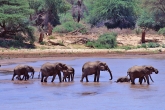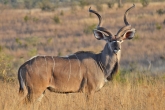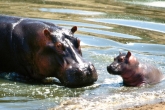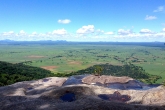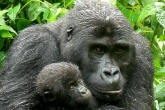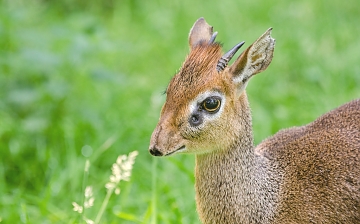Mikumi National Park Tanzania 632
The park lies has low mountains and hills on three sides. The southern section of the park differs markedly from the northern flood plains. The animals also differ they are unused to people and vehicles and tend to run and hide before approaching safari enthusiasts have a chance to spot them. This park suffered in the 1980's from heavy poaching and the animals have learnt to distrust humans; although slowly the animals are becoming habituated once again.
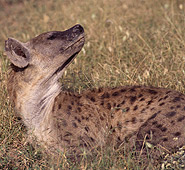
Hyena

Tortoise
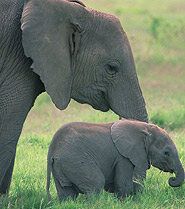
Elephants
There is a natural road stretching from the Vuma hills it passes through ravine and forested country and crosses over the boundary into the northern section of the Selous. These ridges have been used for centuries by Elephants that have decided to avoid the rivers and keep their feet dry.
This park is becoming increasing popular, especially as a weekend break from the nearby Dar es Salaam. This park makes for a perfect start to you safari in the southern parks of Tanzania. It also has amazing light in this park which makes for spectacular photographs.
More than 400 bird species have been recorded, with such colourful common residents as the lilac-breasted roller, yellow-throated longclaw and bateleur eagle joined by a host of European migrants during the rainy season. Hippos are the star attraction of the pair of pools situated 5km north of the main entrance gate, supported by an ever-changing cast of waterbirds.
Summary, Mikumi National Park
Size: 3,230 sq km (1,250 sq miles), the fourth-largest park in Tanzania, and part of a much larger ecosystem centred on the uniquely vast Selous Game Reserve.
Location:
283 km (175 miles) west of Dar es Salaam, north of Selous, and en route to Ruaha, Udzungwa and (for the intrepid) Katavi.
How to get there
A good surfaced road connects Mikumi to Dar es Salaam via Morogoro, a roughly 4 hour drive. Also road connections to Udzungwa, Ruaha and (dry season only) Selous.
Charter flight from Dar es Salaam, Arusha or Selous. Local buses run from Dar to park HQ where game drives can be arranged.
What to do
Game drives and guided walks. Visit nearby Udzungwa or travel on to Selous or Ruaha.
When to go
Accessible year round.
Article Source: https://EzineArticles.com/?expert=Ian_Williamson
Safaris
12 Days Mountain Gorrilas Trakings
14 Days Tanzania Classic Safari
7 Days Samburu, Aberdares, Lake Nakuru and Maasai Mara
10 Days Kenya, Sambura, Mt. Kenya, Lake Nakuru, Masaai Mara and Amboseli
5 Days - Manyara, Ngorongoro and Serengeti National Park
7 Days Lake Manyara, Ngorongoro and Serengeti
3 Days Mountain Gorilla Safari
1 - 4 Days Short Safaris
4 Days Masaai Mara and Lake Nakuru Safari
6 Days Tanzania Camping Safari

 German
German Spanish
Spanish






